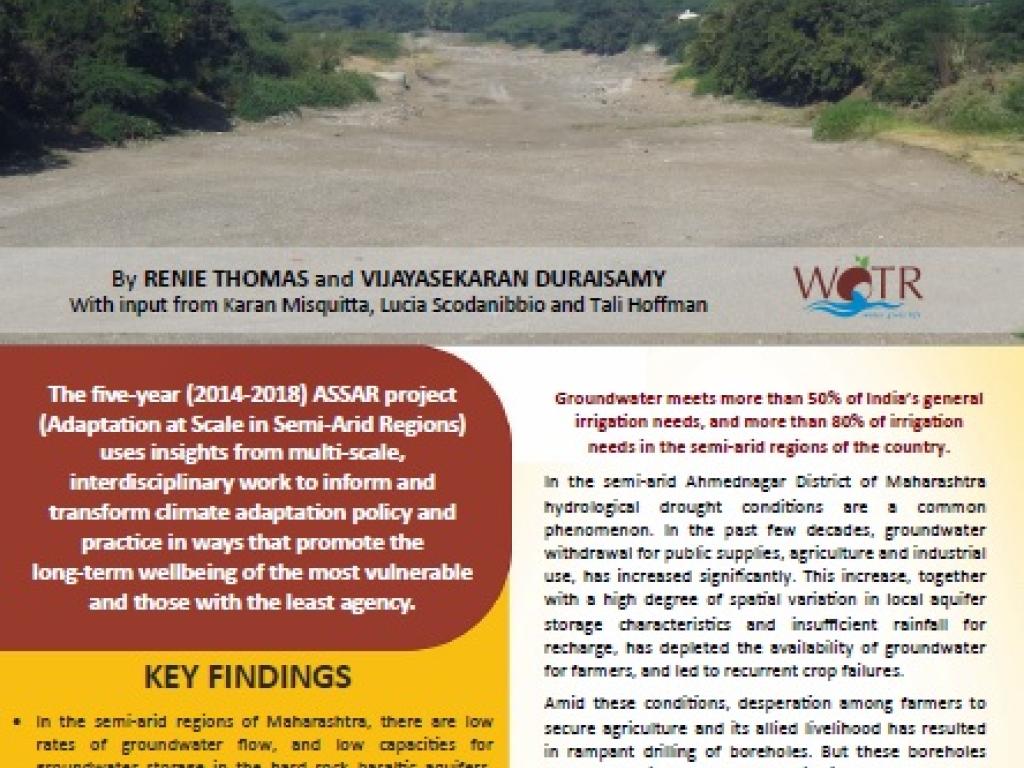Vulnerability to groundwater drought in semi-arid areas of western Ahmednagar District

By Renie Thomas and Vijayasekaran Duraisamy
In the semi-arid Ahmednagar District of Maharashtra, India hydrological drought conditions are a common phenomenon. In the past few decades, groundwater withdrawal for public supplies, agriculture and industrial use, has increased significantly. This increase, together with a high degree of spatial variation in local aquifer storage characteristics and insufficient rainfall for recharge, has depleted the availability of groundwater for farmers, and led to recurrent crop failures.
Amid these conditions, desperation among farmers to secure agriculture and its allied livelihood has resulted in rampant drilling of boreholes. But these boreholes commonly fail due to overexploitation of groundwater and incorrect site selection, pushing many farmers into spiralling debt and severe distress.
Based on their recently published research, here Renie Thomas and Vijayasekaran Duraisamy from the Watershed Organisation Trust argue that if groundwater distribution and availability patterns were better known and better communicated to agrarian communities, farmers could more effectively and sustainably manage crucial common-pool water resources.
Click the image to download the brief
